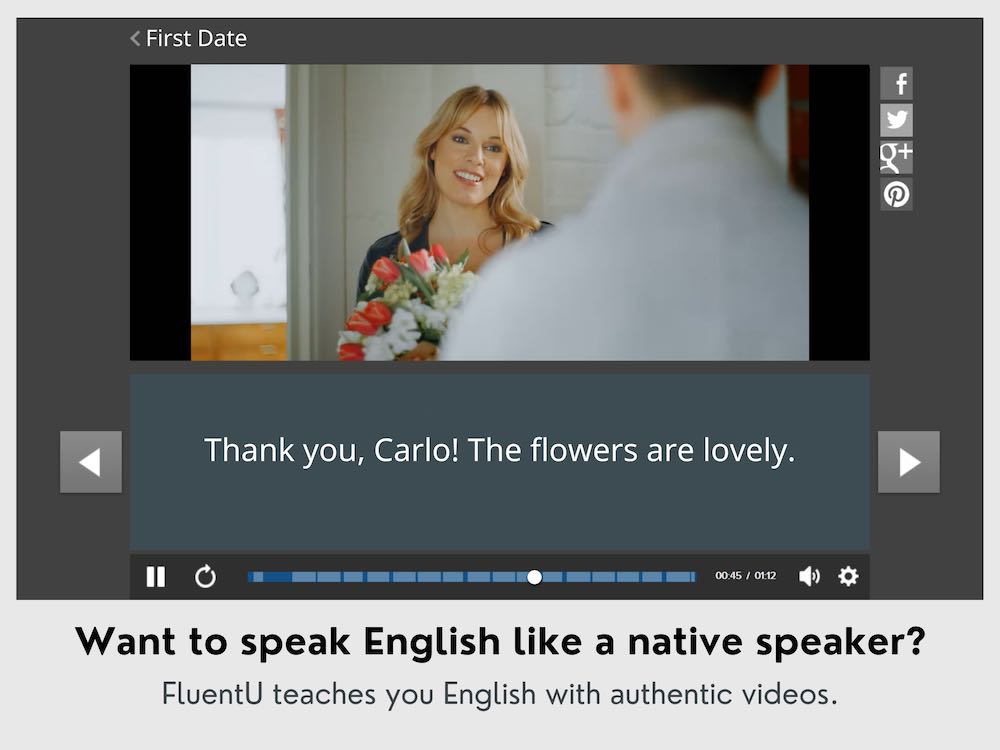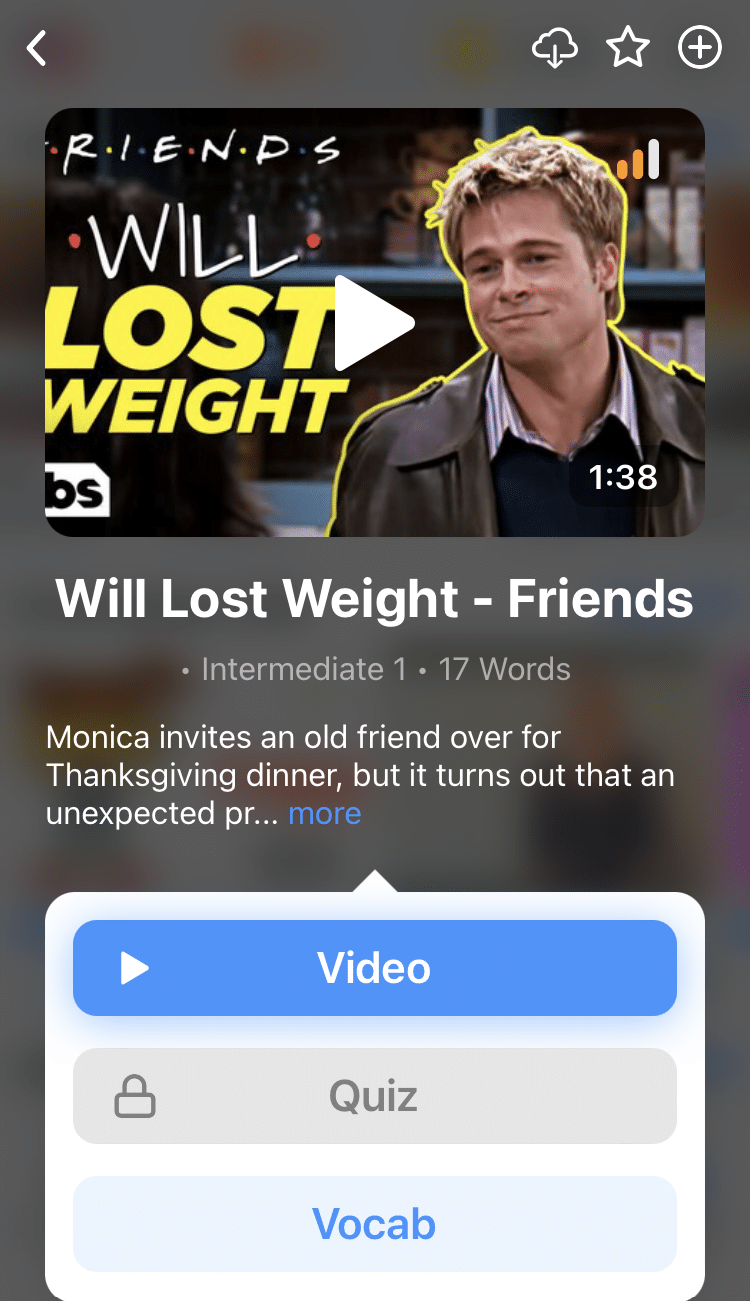
6 Typical Conversations Between Two Friends in English
What does a typical conversation between two friends sound like in English?
This may not be something you’ve covered in your English textbook or classes, but after all, it’s what every English learner aims to do: Have a casual conversation in English!
In this post, you’ll see (and hear!) six examples of a typical conversation between friends.
By exposing yourself to these examples, you’ll feel more confident in your ability to engage in small talk, make plans and have personal conversations.
Contents
Download: This blog post is available as a convenient and portable PDF that you can take anywhere. Click here to get a copy. (Download)
Greetings and Small Talk
Some people think of small talk (unimportant, expected conversation) as being shallow (not honest or “real”). But it’s something that we do to make each other comfortable. For example, asking about someone’s job or how they’re doing is a way of showing that you care, and these questions can lead to more personal and interesting conversation.
It’s true that close friends may not use small talk as much as people who don’t know each other well. But there are still times when using small talk with friends makes sense. For example, if you meet an old friend who you haven’t seen in a long time, or if you’re meeting with a friend who you just don’t see every day.
Let’s look at a couple of conversations below to see what those situations might sound like.
Conversation #1: Conversations Between Friends
Here, we’re actually going to look at a video clip that contains two conversations. This clip can also be found on FluentU with interactive subtitles and a transcript with playable audio.
FluentU takes authentic videos—like music videos, movie trailers, news and inspiring talks—and turns them into personalized language learning lessons.
You can try FluentU for free for 2 weeks. Check out the website or download the iOS app or Android app.
P.S. Click here to take advantage of our current sale! (Expires at the end of this month.)

You’ll find plenty of casual conversations to add to these six examples and get more familiar with what they sound like.
Let’s read along to the conversations in the above video:
Sam: Oh? Bob!
Bob: Hey Sam! Good to see you!
Sam: How’s it going?
Bob: Yeah, good. Working a lot. And you?
Bob: Good for you!
Mike and Jim
Jim: Mike?
Mike: Jim?
Jim: What have you been up to?
Mike: Working a lot.
Jim: That sounds hard.
Mike: How’s the family?
Jim: Everyone is good. Thanks!
Now, let’s look at some useful phrases from the dialogues above.
Useful Phrases
This is a nice way to greet someone when you haven’t seen them in a while.
This is a common greeting in English, like “How are you?” Don’t be surprised if you say this to someone and they don’t respond, or say “Yeah, how’s it going?” back.
Bob replies to this question with “Yeah, good.” This might seem a little weird because Sam didn’t ask a yes or no question. But in this case, “yeah” doesn’t have any special meaning. It’s just a way to acknowledge Sam’s question and move on.
This is a positive phrase in English to congratulate a friend on their successes or accomplishments.
Conversation #2: Meeting Up with a Friend at a Restaurant
Small talk can happen with close friends who you see regularly and with friends you don’t see as often. Here’s an example of a conversation that could happen between two friends who know each other pretty well.
Nathan: Hey, Alicia?
Alicia: Oh hey, I didn’t see you there. Did you already get a table?
Nathan: Yeah, right over here.
Alicia: I’m glad we had time to meet up.
Nathan: Me too. So, what’s going on?
Alicia: Oh, not much. You?
Nathan: Not much. Hey, how did your interview go? Wasn’t that today?
Nathan: Well, I’m sure you did great. Good luck.
Alicia: Thanks. I’m just happy that it’s over. I was really nervous about it.
Nathan: I can understand that. I get nervous before interviews, too.
Alicia: Well, thanks for being supportive. I appreciate it.
Nathan: Sure, no problem.
Useful Phrases
“I’m glad we had time to meet up.”
If you’re meeting a friend you don’t see every day, this is a nice way of saying that you appreciate them making an effort to see you. Other ways of saying this could be, “Thanks for making time to see me” or “We should do this more often.”
Like with “How’s it going?” the other person might not always reply to this question. If they do, they’ll probably either actually tell you what’s going on, or just say, “Not much.”
In the conversation above, Nathan and Alicia both say “not much” is going on with them, but then they end up talking about Alicia’s interview. This is pretty common. A person might sometimes even reply “not much,” and then immediately start talking about all the things that actually are going on.
This is a good phrase to acknowledge a friend’s feelings or opinions.
This is a casual way of saying “You’re welcome” when someone thanks you.
Making Plans with Friends
To see your friends in the first place, you have to make plans with them. Here are a couple of conversations that show how that could go.
Conversation #1: Inviting a Friend for a Movie
John: Hello, Bob!
Bob: Hi, John!
John: Are you free this weekend?
Bob: I think so, why?
John: Want to see a movie?
Bob: Sure.
John: Great!
Useful Phrases
This is a friendly, common way to open a conversation when you’re going to ask someone to do something with you.
Conversation #2: Making Plans for a Get-together
In the conversation above, Bob and John decide to see a movie together. But they don’t decide on what to see, or an exact time. Hopefully, they’ll talk about this later—otherwise, they won’t know what they’re doing!
Below, we’ll look at a more detailed conversation about making plans.
Trudy: Hey, so I’m having a party at my place next weekend. Do you want to come?
Ruth: Sure! That sounds like fun. Who else is coming?
Ruth: What time should I be there?
Trudy: Oh, anytime between 6 and 7 would be fine.
Ruth: Can I bring anything?
Trudy: Oh, don’t worry about it. I have everything covered.
Ruth: Can I at least bring a bottle of wine?
Trudy: Well, I’m not going to say no to wine. I’m sure that would be appreciated.
Ruth: I’ll do that, then. Thanks for inviting me.
Useful Phrases
If someone invites you to an event, or just invites you to do something with them, this is a nice way to say “yes.”
In the U.S. and some other English-speaking areas, this is a polite question to ask if someone invites you to a dinner, party or holiday event where there’s going to be food. It’s usually appropriate (and sometimes even expected!) to ask this question even if the person who invited you is a close friend or family member.
Having Personal Conversations with Friends
Once you’ve made plans and greeted your friends, all that’s left to do is just… well, be a friend. Friends go to each other for help, for advice and when they want to share their opinions and experiences.
Conversations that are more personal are usually less structured and follow fewer rules. But there are still phrases that English speakers tend to use a lot in personal conversations, and there are still certain speech patterns we follow to show support for our friends. Let’s look at some examples.
Conversation #1: A Friend’s Advice
Makayla: Hi, Gemma. You look terrible!
Gemma: Hey, Makayla. Mmm, I haven’t slept.
Makayla: Are you OK? What’s the matter?
Gemma: Well, you know that photo I sent to Clare on Friday night?
Makayla: Yeah?
Gemma: Well, she sent it to Justin.
Makayla: Oh no! How could she do that? It obviously was only for her.
Gemma: I know! I thought she’d find it funny.
Makayla: Well, it was quite funny. But you didn’t expect her to send it to anyone.
Gemma: No, of course not! Especially not Justin! Oh, it’s so embarrassing!
Makayla: Ah well, don’t worry. I know how you feel, though.
Gemma: And what if he puts it on Facebook or something? What if my mum sees it?
Makayla: No no, don’t worry. He won’t. It’s not that interesting for him or anyone else, to be honest.
Gemma: But what if he does?
Makayla: He won’t. But maybe ask Clare to speak to Justin… Get him to delete the photo?
Gemma: Yeah, maybe. But that might just make him even more interested.
Makayla: Yeah, true.
Gemma: What do you think I should do?
Makayla: Mmm… I’d just try to forget about it if I were you.
Gemma: But I’m so annoyed with Clare!
Makayla: Maybe speak to Clare, tell her how you feel. She shouldn’t be sharing people’s private photos.
Gemma: Okay, yeah. Thanks for the advice, Makayla. I’ll talk to her.
Makayla: Good idea. And don’t worry. Just be careful and don’t send any more embarrassing photos!
Gemma: Yeah, I know, I know. I won’t.
Note: The dialogue above is in British English. The only difference in how this conversation might go in American English is that Gemma would probably say “mom” instead of “mum.” Also, Americans tend to use “quite” less than British people.
Useful Phrases
“Are you okay?” / “What’s the matter?”
The above two phrases are good for checking on your friends if it seems like something might be wrong.
“What do you think I should do?”
It isn’t always obvious when you’re looking for advice, in any language. If you want to know what a friend thinks you should do in a situation, just ask like this!
This is a good general phrase for showing sympathy, and it might not always be used literally. For example, we have no idea if Makayla really does know how Gemma feels. But what Makayla seems to be saying is that Gemma’s feelings still matter, even if the situation itself isn’t that bad.
However, you may want to be careful of using this phrase if someone is telling you about a situation that you obviously can’t understand personally. In a case like that, it could seem rude and self-centered. Instead, you can say, “That sounds terrible.”
Conversation #2: Talking About Opinions on a Book
Friends can help you when you’re having problems. They’re also there to listen when you just want to talk about your feelings and opinions.
Nina: So I don’t know what you thought about the book, but I had a lot of mixed feelings about it.
Sean: Oh, really? Like what?
Sean: I can see that. It definitely seemed like he had some problems with women.
Nina: Oh yes, the writing was beautiful! That just made me more disappointed in the character.
Sean: That does make sense. I think maybe the problem for me is just that not much actually happened.
Nina: You’re right about that. There wasn’t much of a story.
Sean: I still enjoyed parts of the book, though.
Nina: Oh, I did, too. And I appreciate hearing your point of view.
Useful Phrases
“I don’t know what you thought about…”
This is a nice way to let someone know that you would be open to hearing their thoughts.
This is a good way to acknowledge someone’s thoughts, whether or not you agree with them.
“I agree with that.” / “I’m not sure if I agree with that.”
“I’m not sure if I agree with that” is nicer than “I don’t agree with you.”
This is a common way that people end sentences when giving their opinions or explaining something. Often, this has the meaning of “Does that make sense?” or “Do you understand what I mean?”
Good friendships are rewarding and worthwhile, no matter what language you speak.
Hopefully, the above conversations between two friends have given you a better idea of how to communicate and connect with your English-speaking friends.
Download: This blog post is available as a convenient and portable PDF that you can take anywhere. Click here to get a copy. (Download)
And One More Thing...
If you like learning English through movies and online media, you should also check out FluentU. FluentU lets you learn English from popular talk shows, catchy music videos and funny commercials, as you can see here:
The FluentU app and website makes it really easy to watch English videos. There are captions that are interactive. That means you can tap on any word to see an image, definition, and useful examples.
For example, when you tap on the word "searching," you see this:
Learn all the vocabulary in any video with quizzes. Swipe left or right to see more examples for the word you’re learning.

FluentU helps you learn fast with useful questions and multiple examples. Learn more.
The best part? FluentU remembers the vocabulary that you’re learning. It gives you extra practice with difficult words—and reminds you when it’s time to review what you’ve learned. You have a truly personalized experience.
Start using the FluentU website on your computer or tablet or, better yet, download the FluentU app from the iTunes or Google Play store. Click here to take advantage of our current sale! (Expires at the end of this month.)











